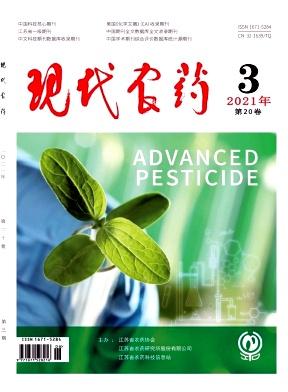Evaluation of Monitoring Data in Foods
引用次数: 6
Abstract
Pesticide residue monitoring data reflect the actual residues in foods as traded and are suitable for estimating consumers’ exposure, evaluating compliance with maximum residue limits, MRLs, and refining future risk-based sampling programmes. The long-term exposure (daily intake) is calculated from the national or regional food consumption data and average residues in the edible portions of food. The non-detected residues may be counted as LOQ, 0.5 LOQ, or 0. The short-term intake is calculated from the large portion consumption of individual foods multiplied by the highest residue concentration found in them and the relevant variability factor. Dietary exposure to a pesticide residue may be characterised by the hazard quotient (HQ) and the hazard index (HI). Cumulative exposure should only be assessed for those compounds having the common mechanism of toxicity (cumulative assessment group, CAG). The number of residue data required for these assessments should be calculated with distribution-free statistics at the targeted confidence level. The proper evaluation of the numerous results can only be completed if they are electronically recorded and can be retrieved in specific formats. Our objectives are to present methods for consumer risk assessment, testing compliance with MRLs, and ranking commodities for risk-based sampling and to give examples of electronic processing of residue data.食品监测数据的评价
农药残留监测数据反映了交易食品中的实际残留,适用于估计消费者的接触情况、评估最大残留限量、最大残留限量的遵守情况,以及改进未来基于风险的抽样方案。长期暴露量(每日摄入量)是根据国家或地区食品消费数据和食品可食用部分的平均残留物计算的。未检测到的残留物可以计数为LOQ、0.5 LOQ或0。短期摄入量的计算方法是将单个食物的大部分消耗量乘以其中发现的最高残留浓度和相关的变异系数。可通过危害商(HQ)和危害指数(HI)来表征饮食中农药残留的暴露。累积暴露只应对那些具有共同毒性机制的化合物进行评估(累积评估组,CAG)。这些评估所需的残差数据数量应在目标置信水平上使用无分布统计来计算。只有以电子方式记录并能够以特定格式检索,才能完成对众多结果的适当评价。我们的目标是提出消费者风险评估的方法,测试对MRLs的依从性,并对基于风险的抽样商品进行排名,并给出残留物数据电子处理的例子。
本文章由计算机程序翻译,如有差异,请以英文原文为准。
求助全文
约1分钟内获得全文
求助全文

 求助内容:
求助内容: 应助结果提醒方式:
应助结果提醒方式:


